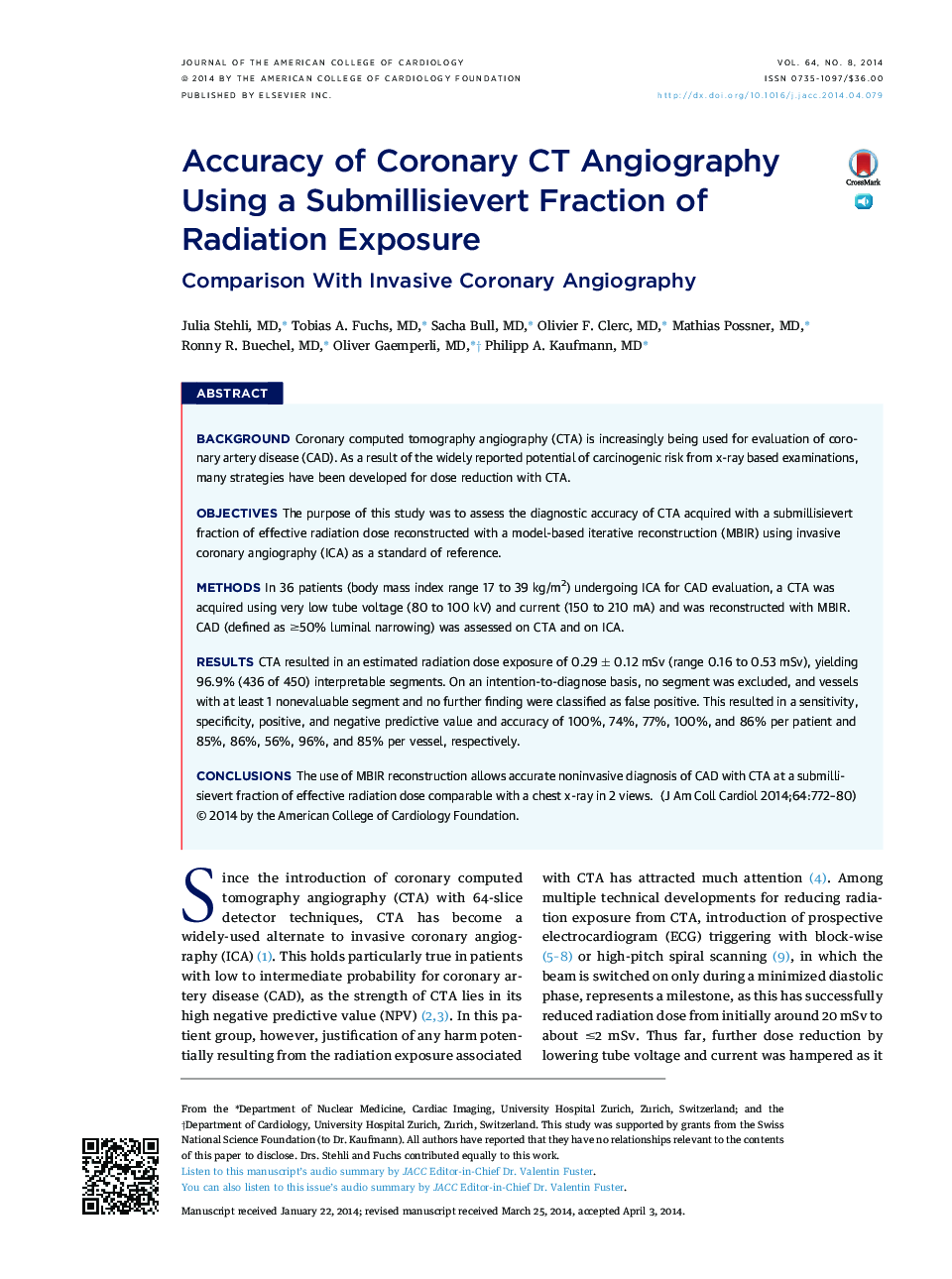| Article ID | Journal | Published Year | Pages | File Type |
|---|---|---|---|---|
| 2944255 | Journal of the American College of Cardiology | 2014 | 9 Pages |
BackgroundCoronary computed tomography angiography (CTA) is increasingly being used for evaluation of coronary artery disease (CAD). As a result of the widely reported potential of carcinogenic risk from x-ray based examinations, many strategies have been developed for dose reduction with CTA.ObjectivesThe purpose of this study was to assess the diagnostic accuracy of CTA acquired with a submillisievert fraction of effective radiation dose reconstructed with a model-based iterative reconstruction (MBIR) using invasive coronary angiography (ICA) as a standard of reference.MethodsIn 36 patients (body mass index range 17 to 39 kg/m2) undergoing ICA for CAD evaluation, a CTA was acquired using very low tube voltage (80 to 100 kV) and current (150 to 210 mA) and was reconstructed with MBIR. CAD (defined as ≥50% luminal narrowing) was assessed on CTA and on ICA.ResultsCTA resulted in an estimated radiation dose exposure of 0.29 ± 0.12 mSv (range 0.16 to 0.53 mSv), yielding 96.9% (436 of 450) interpretable segments. On an intention-to-diagnose basis, no segment was excluded, and vessels with at least 1 nonevaluable segment and no further finding were classified as false positive. This resulted in a sensitivity, specificity, positive, and negative predictive value and accuracy of 100%, 74%, 77%, 100%, and 86% per patient and 85%, 86%, 56%, 96%, and 85% per vessel, respectively.ConclusionsThe use of MBIR reconstruction allows accurate noninvasive diagnosis of CAD with CTA at a submillisievert fraction of effective radiation dose comparable with a chest x-ray in 2 views.
